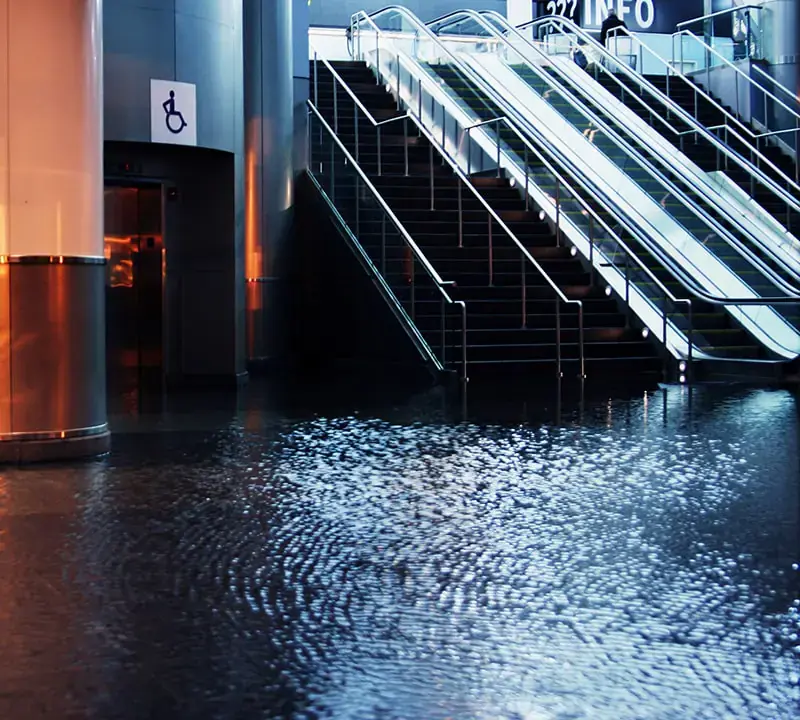When disaster strikes in the form of a fire, the aftermath can be devastating. The destruction caused by fire is not just limited to the visible damage to your home or property but can also lead to secondary damage, such as smoke, soot, and water damage from firefighting efforts. This is where emergency fire damage restoration plays a crucial role in mitigating further damage. Let’s explore how emergency fire damage restoration can help minimize the destruction and why it’s essential to act quickly.
What Is Emergency Fire Damage Restoration?
Emergency fire damage restoration refers to the immediate steps taken to restore your property after a fire incident. These steps are critical to stop the damage from escalating and protect the property from further harm. Professional restoration teams are equipped with the knowledge, tools, and expertise to handle fire and smoke damage effectively.
Restoration services can include boarding up windows, securing the property, cleaning up soot and smoke, addressing water damage caused by firefighting efforts, and removing hazardous materials. The goal is to stabilize the situation and begin the cleanup process as quickly as possible to prevent long-term issues that could result in costly repairs.
How Does Fire Damage Continue to Affect Your Property?
After a fire, the damage does not end when the flames are extinguished. In fact, the longer the property remains unattended, the more severe the damage can become. Here are some common ways that fire damage can continue to affect your property:
- Smoke and Soot Damage: Smoke particles can permeate materials and leave behind lingering odors. Soot, the black residue left by the fire, can stain walls, ceilings, and floors. If not treated promptly, soot can cause permanent damage to fabrics, carpets, and furniture.
- Water Damage: During firefighting efforts, water is often used to put out the flames, leading to water damage. If not addressed quickly, this water can seep into the structure of the building, causing mold growth and weakening the structural integrity of the property.
- Structural Damage: The fire’s heat can weaken the structural components of your home, including walls, ceilings, and beams. Left untreated, this damage can compromise the safety of the building.
- Health Risks: Soot, smoke, and water damage can introduce harmful toxins into the air, which may pose health risks to those exposed to it. Mold growth, in particular, can lead to respiratory issues if not treated properly.
How Does Emergency Fire Damage Restoration Help Prevent Further Damage?
The primary purpose of emergency fire damage restoration is to prevent additional damage from occurring. By taking swift action, restoration experts can address the immediate concerns that arise after a fire and mitigate the risk of further damage. Here’s how it works:
- Quick Response to Secure the Property: One of the first steps in emergency fire damage restoration is securing the property. Restoration professionals will board up windows and doors to prevent vandalism, theft, or exposure to the elements. This immediate action helps protect your home or business from further damage.
- Water Extraction and Flood Cleanup: If water damage has occurred due to firefighting efforts, flood cleanup service will be a key part of the restoration process. Standing water can lead to mold growth and further structural damage if left unattended. Restoration teams will quickly remove the water and dry out the property to prevent additional complications.
- Smoke and Soot Removal: After the fire is out, soot and smoke residue can continue to spread throughout the building. If left untreated, soot can permanently stain surfaces, and the smoke odor can linger for months. Emergency fire damage restoration experts will use specialized cleaning methods to remove smoke and soot from walls, ceilings, and furniture, restoring your property to its pre-fire condition.
- Preventing Mold Growth: After a fire, especially one that involves significant water usage, mold is a significant concern. If water is not properly extracted and the area is not dried quickly, mold can begin to form within 24 to 48 hours. Mold not only damages your property but can also be hazardous to your health. Emergency fire damage restoration services include thorough drying and dehumidification to prevent mold growth.
- Preventing Further Structural Damage: Emergency restoration teams will assess the structural integrity of your home or business. They will address any issues such as weakened beams, walls, or floors that might pose a risk to the building’s stability. By addressing these problems early, restoration professionals can prevent further damage from occurring.
Why Is Immediate Action Important for Fire Damage Restoration?
The sooner you act after a fire, the better the chances of limiting further damage. Waiting too long to begin restoration efforts can result in increased repair costs, prolonged disruption to your life, and even health risks. Here’s why immediate action is essential:
- Minimize Water Damage: As mentioned earlier, the longer water from firefighting efforts sits in the building, the greater the potential for mold growth and structural damage. Water must be removed as quickly as possible to prevent further harm.
- Preventing Smoke Odor from Lingering: The longer the smoke and soot are left untreated, the more difficult it becomes to eliminate the odor. Immediate cleanup helps to prevent the smell from becoming embedded in carpets, walls, and furniture.
- Avoid Additional Safety Hazards: A fire can weaken the structural integrity of a building, and if repairs aren’t made promptly, the property could become unsafe to inhabit. Emergency fire damage restoration services assess and address these safety hazards right away to protect both the property and its occupants.
- Insurance Claims: Acting quickly can help you file insurance claims in a timely manner. Most insurance policies require that you mitigate further damage, and failing to do so could result in a reduced payout. Restoration professionals can help guide you through the claims process, ensuring that you follow all necessary steps.
How Does Emergency Fire Damage Restoration Relate to Flood Cleanup?
Flood damage can often result from a fire, especially when firefighting efforts involve significant amounts of water. In this case, flood cleanup service becomes an essential part of the fire damage restoration process. Flood cleanup involves removing water from the premises and addressing any damage caused by flooding.
When fire and water damage occur simultaneously, professionals need to prioritize both fire damage cleanup and flood cleanup. This combination of services ensures that all aspects of the damage are addressed comprehensively, preventing further harm to the structure and minimizing health risks associated with mold growth and contaminated water.
Conclusion
Emergency fire damage restoration is essential in preventing further damage after a fire. From securing the property and removing water to addressing smoke and soot damage, professional restoration services work quickly to mitigate the effects of the fire and prevent additional harm. By taking immediate action, you can protect your property, reduce the risk of health hazards, and minimize costly repairs in the future.
In cases where flood damage is involved, flood cleanup service is a key part of the restoration process. Whether you’re dealing with fire, water, or both, quick and effective restoration is vital for preventing further damage and ensuring your home or business is restored to its pre-loss condition.








